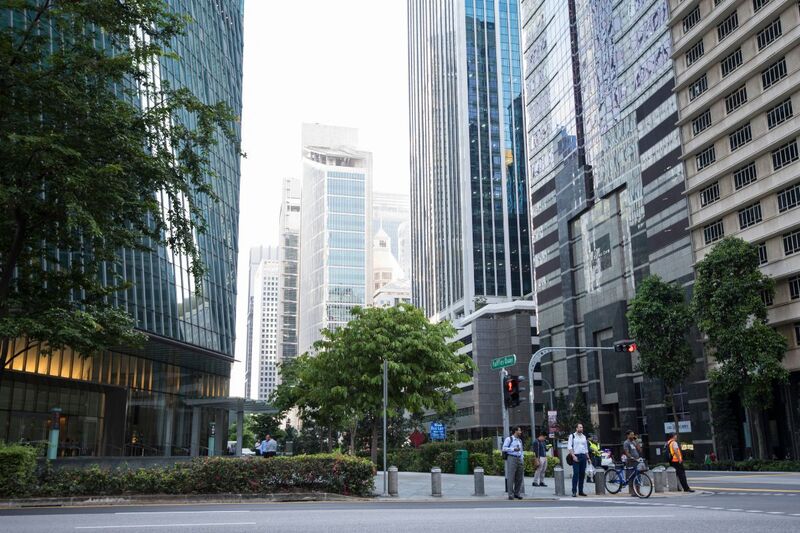From Recovery to Reality: Singapore’s 2026 Hiring Outlook

This article is written in English for readers in Singapore. Chinese and Japanese translations are available on our website.
Singapore’s Hiring Market Moves from Rebound to Reset
After two years of post-pandemic recovery, Singapore’s labour market has entered a phase of stabilised growth — not shrinking, but no longer expanding at the same speed.
According to the Ministry of Manpower’s Labour Market Advance Release (Q3 2025), total employment rose by 24,800 quarter-on-quarter, while the overall unemployment rate held at 2.0% (residents 2.8%, citizens 3.0%). Retrenchments remained contained at 3,500 for the quarter. These indicators point to a market that is normalising: employers are hiring more selectively, and wage growth is easing into sustainable territory.
1️⃣ The 2026 Shift: From Expansion to Efficiency
Reeracoen’s Singapore Salary Guide 2026 — built from 140,000 data points across 15 industries (Sep 2024–Sep 2025) — projects overall wage growth moderating to 4.0–4.3% in 2026. In practical terms, the hiring lens is shifting from “add capacity” to “raise productivity.” Expect:
- AI transformation, green skills, and leadership succession to dominate HR strategies.
- Hiring volumes to be steadier in 1H 2026, with higher bar on talent quality.
- Retention initiatives to displace across-the-board pay rises as the top priority.
“2026 will be the year companies ask, ‘Are we hiring smarter — or just hiring more?’”
2️⃣ Sector Performance: Balancing Resilience and Realignment
Technology & AI Infrastructure
After right-sizing in 2024–25, tech is rebuilding lean, outcome-driven teams. Priority roles include AI-enabled engineers, data analysts, and cyber-risk professionals; emphasis is on multi-disciplinary talent that can deliver commercial impact with fewer resources.
Financial Services & Fintech
Policy work around asset tokenisation (Project Guardian) and sustainable finance continues to shape demand in private banking, fintech, and ESG-oriented investment. Roles in risk, compliance, and ESG analytics remain resilient as pilots and standards mature.
Manufacturing & Semiconductors
Advanced manufacturing stays a growth pillar, but retention is a challenge. Recent surveys show manufacturing posting the highest overall turnover (~26%) among major sectors. Employers are countering with targeted bonuses, upskilling pathways, and more flexible shift design.
Healthcare & Life Sciences
Aging demographics and continued biomedical investment support demand for nurses, lab technologists, and R&D. Health & Social Services expanded solidly through 2025, with momentum expected into 2026.
Professional & Corporate Services
Consulting and corporate functions remain steady but cost-sensitive. Employers are blending permanent + contract + hybrid teams to maintain capability while managing overheads.
3️⃣ Salary & Hiring Outlook (What to Expect — Without the Noise)
Your 2026 guide points to moderation, not contraction. Rather than publish precise sector-by-sector increment tables (which are not available from official sources), here’s what the market signal supports:
- Targeted, not uniform, increments. Higher adjustments for roles tied to AI, cybersecurity, data, and critical operations; steadier adjustments for broad entry-level bands.
- Selective headcount growth. Employers will expand where productivity lift is clear; “replacement-only” budgets in low-margin areas.
- Higher bar for mid-career hires. Demonstrable business impact and cross-functional skill sets matter more than role titles.
4️⃣ Three Realities Shaping Employer Strategy
Reality 1: Retention Is the New Recruitment
With manufacturing turnover near 26% and elevated attrition across other sectors, keeping experienced staff is now a prime cost-control lever. Expect recognition programmes, variable bonuses, and structured upskilling to scale faster than constant backfilling.
Reality 2: Variable Pay Gains Ground
Where base-salary budgets are tight (e.g., outward-oriented sectors), firms are leaning more on performance-linked incentives and project bonuses to reward outcomes without locking in fixed payroll. (Avoid quoting specific company-wide percentages unless you have internal data to cite.)
Reality 3: Skills-Based Hiring, Carefully Applied
Firms continue moving toward skills-first assessments, aligned with Singapore’s SkillsFuture and broader transformation agenda. Adoption is growing but uneven; treat it as a direction, not an overnight revolution.
5️⃣ Reeracoen’s Recommendations for 2026
1. Re-benchmark early.
Plan for ~4.0–4.3% overall wage growth, with above-market adjustments for AI, ESG, healthcare, and mission-critical operations.
2. Strengthen mid-career pathways.
Leverage national reskilling support; internal mobility and structured transitions often beat external hires on time-to-productivity.
3. Refresh your EVP.
Flexible work norms, transparent career mobility, and wellbeing are now baseline expectations — not perks.
4. Integrate AI into workforce planning.
Use HR analytics to spot attrition risk, optimise rewards, and map succession to skill gaps.
5. Build inclusive, multilingual teams.
Cultural competence and language capabilities (e.g., JP, CN) remain differentiators for regional roles.
Singapore’s 2026 Hiring Outlook in One Sentence:
Smarter hiring, sustainable pay, and renewed focus on people retention.
Benchmark your 2026 hiring and salary strategy with live market data.
👉 Book a Salary Benchmark Consultation with Reeracoen Singapore.
Understand where demand is shifting and why.
👉 Download the Singapore Salary Guide 2026 (sector-specific insights).
✅ Final Author Credit
By Valerie Ong (Regional Marketing Manager)
Published by Reeracoen Singapore — a leading recruitment agency in APAC.
🔗 Related Articles
- Singapore Salary Guide 2026: The Skills & Sectors to Watch
- 5 Pay Trends Every Employer Should Know for 2026
References
- MOM — Labour Market Advance Release, Q3 2025 (employment +24,800; unemployment 2.0%; retrenchments 3,500; wage-increase intentions easing).
- Reeracoen Singapore Salary Guide 2026 (Sep 2024–Sep 2025 dataset; forecast 4.0–4.3%; 140k data points; 15 industries).
- MAS — Project Guardian / tokenisation initiatives; Singapore-Asia Taxonomy and related 2025 guidance.
- Turnover context — surveys highlighting manufacturing as highest turnover (~26%).

Disclaimer:
The information provided in our blog articles is intended for general informational purposes only. It is not a substitute for professional advice and should not be relied upon as such.
While we strive to provide accurate and up-to-date information, the ever-evolving nature of certain topics may result in content becoming outdated or inaccurate over time. Therefore, we recommend consulting with qualified professionals or experts in the respective fields for specific advice or guidance. Any actions taken based on the information contained in our blog articles are solely at the reader's discretion and risk. We do not assume any responsibility or liability for any loss, damage, or adverse consequences incurred as a result of such actions.
We may occasionally provide links to external websites or resources for further information or reference. These links are provided for convenience and do not imply endorsement or responsibility for the content or accuracy of these external sources. Our blog articles may also include personal opinions, views, or interpretations of the authors, which do not necessarily reflect the views of our organisation as a whole. We encourage readers to verify the accuracy and relevance of information presented in our blog articles and to seek professional advice when needed. Your use of this website and its content constitutes acceptance of this disclaimer.



